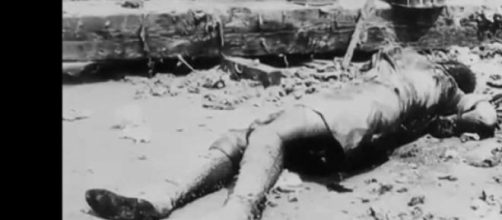There is a reason why April 14 is considered to be jinxed for the deep blue seas. This was the day when Titanic went down in 1912, and several decades later another majestic ship SS Fort Stikine, a cargo vessel carrying ammunition, met the same fate at the Bombay docks in 1944.
Old natives of Bombay, what is today known as Mumbai, still cannot forget the fateful afternoon when 1400 tonnes of explosives took 800 lives (this was the official number) and gutted an estimated asset worth 20 million pounds.
Bombay explosion on April 14, 1944, in the Victoria Dock of Bombay still send shivers down the spines of people who survived that fateful day.
The port city which was a bustling trade center of the war time British India, came to a standstill because of the worst ever explosions recorded in the history. The deadly explosion, it is believed, was the result of confusion, lack of planning and shocking lack of foresight of a section of colonial rulers.
A freighter SS Fort Stikine, carrying a mixed cargo of cotton bales, gold and ammunition including 1400 tonnes of explosives, caught fire and was destroyed in two giant blasts. The city, recall the old timers, remained in smokes, scattering debris, stench of burning flesh for several weeks. It took several days to bring the fire under control, and 8000 men toiled for seven months to remove the debris and make the dock functional again.
This was an accident that had pushed back the poverty-stricken Indians living in the nearby slums to further economic crises, as several families lost all their belongings and thousands became destitute. Several thousands of people lost their jobs and remained without work as nearby ancillary factories stopped functioning for long. The cargo carried a combination of goods which were lethal. It carried cotton bales along with crude oil, gold bars and 238 tonnes of sensitive explosives, torpedoes, mines and shells.
The fire gutted around 50,000 tonnes of food grain and this gave rise to black-marketing and excessive shortage of food in the Indian markets, during the British colonial rule.
Japanese controlled Radio Saigon was the first to report the news when the world learnt about the deadly disaster. British India issued a gag order, as a result of which the news was published only in the second week of May, 1944.
Veteran Indian cinematographer Sudhish Ghatak made a documentary portraying the explosion and aftermath, which was confiscated by military officers, but some portions were made public. The relevant portions from Ghatak's newsreel are perhaps the only official documentation of the event.

